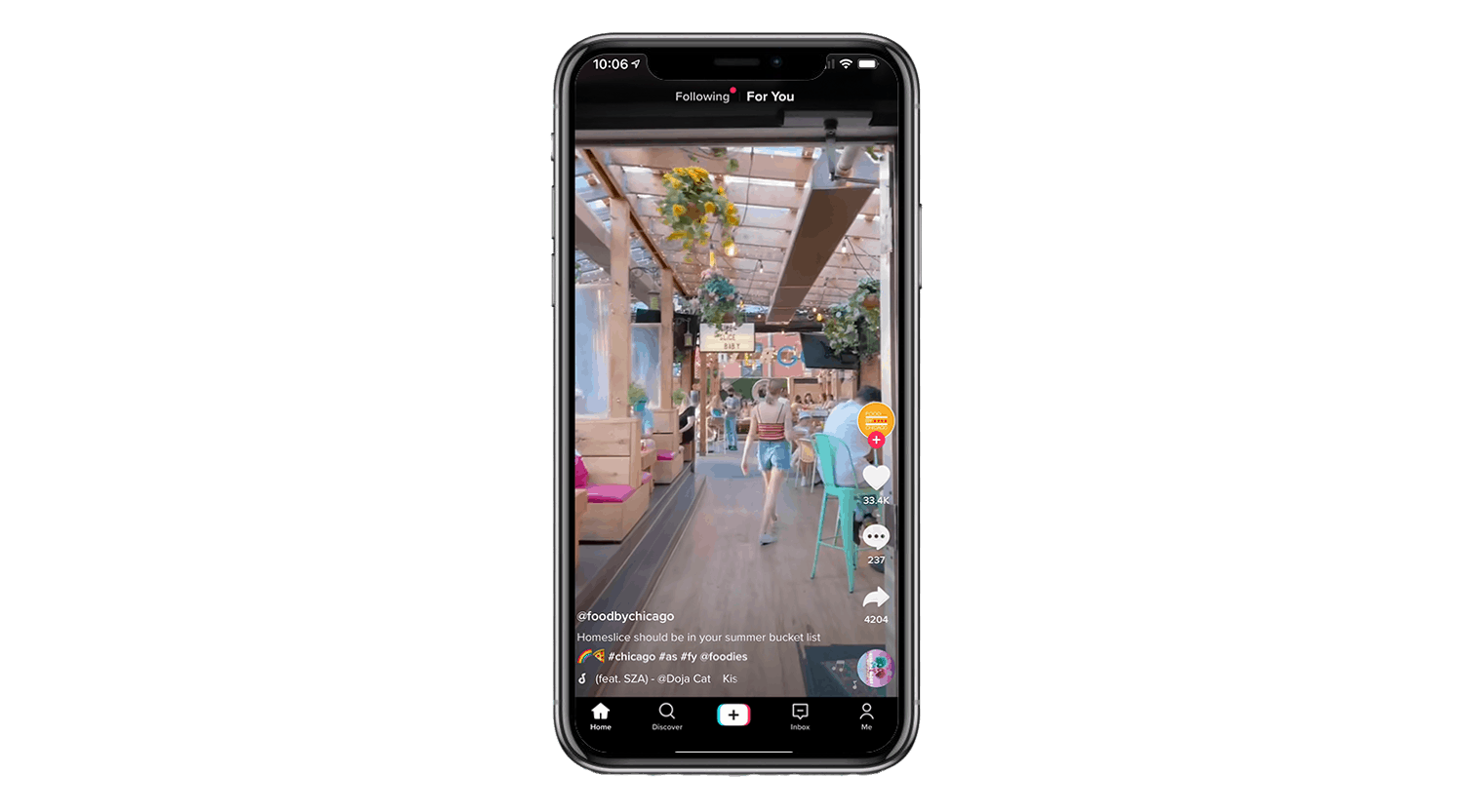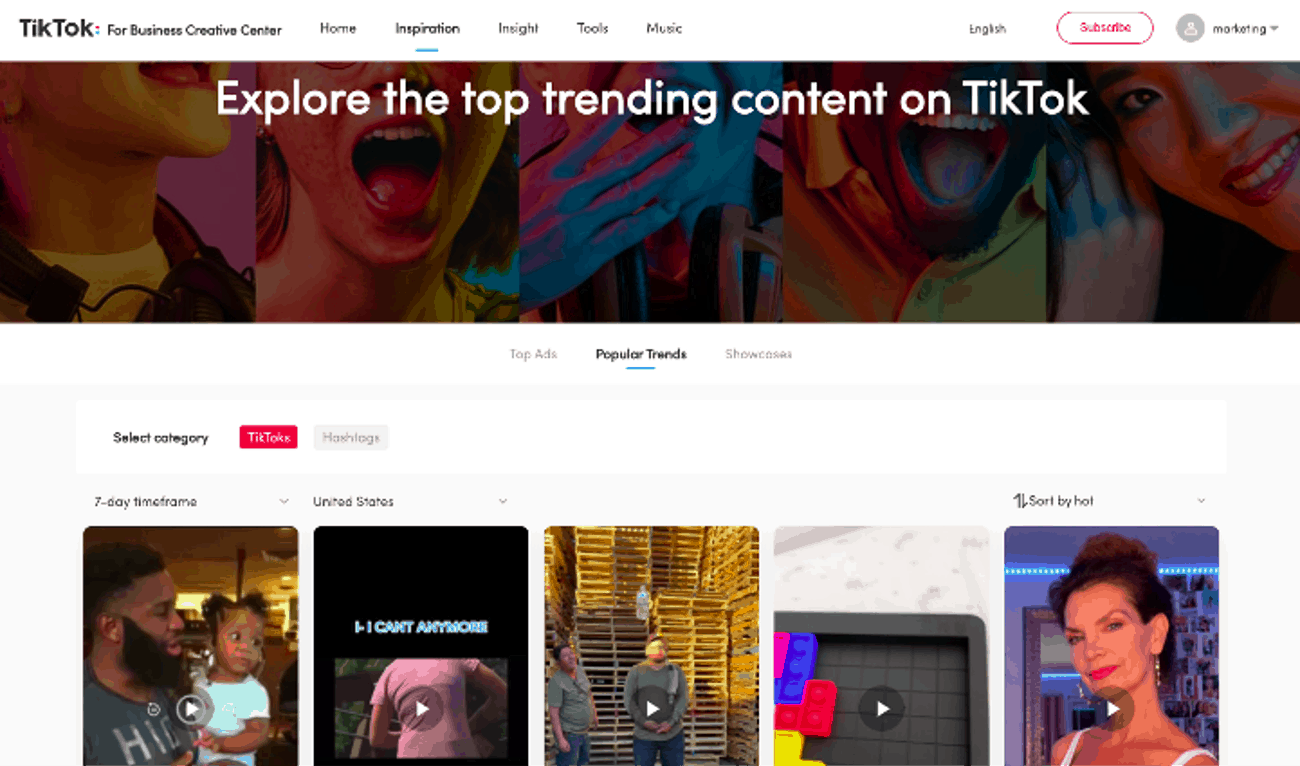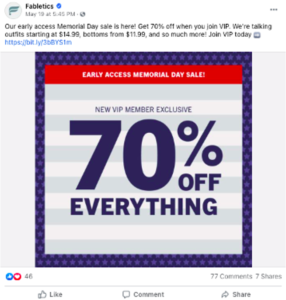Conquering TikTok Ads – What Agencies and Retailers Need to Know
July 12, 2021 by
On the social media ad landscape, Facebook and Instagram lead the way in just about every category. But now there’s a new kid in town, and they’re more grown-up than you may think. TikTok is making enormous strides in paid social reach, capabilities, and results. Nearly 50% of TikTok users across all demographics have purchased a product or service from a brand after seeing it advertised on the platform.
But unlike other social media platforms, TikTok advertising works differently. If you’re sticking to the social media plan you use for other platforms, you won’t be tapping into the success and revenue streams TikTok has to offer. So, we’ve broken down what you need to know to thrive on TikTok.
In this post you’ll learn:
- How to make the most of TikTok content
- How to maximize your reach and relevance to prevent wasted ad budget
- Who’s really using and buying on TikTok
- How to create custom audiences using location data
- and much more
Getting to Know TikTok
The biggest question on everyone’s mind is where to begin with TikTok advertising. It all starts with understanding how TikTokers use and interact with TikTok content. Unlike other social media platforms like Facebook or Instagram that connect people with content based around who they know, TikTok is an algorithm-based platform that serves people TikToks based on their content preferences. Because of this, you can’t stick to the social media strategy you use across other platforms.
The For You Page
TikTok is made up of three main pages that users navigate to see and create TikToks. The most popular and most important page is the For You Page. TikTok stands out from other social media platforms in many ways, but the For You Page is what makes it unique. The For You Page is an algorithm-based page that serves users’ videos based on the content they like and interact with.

Because of this, everyone’s page is personalized. For example, if you engage with cooking videos frequently, the algorithm knows to serve you more videos of that sort. But this also means users are not in total control of what content they see; instead, the algorithm chooses for them.
This presents an opportunity for brands and retailers to capitalize on. Unlike Facebook or Instagram where you need to be friends with someone to see their posts, on TikTok you do not have to follow people to see their content. This makes it possible for brands to have their posts seen by people who do not follow their account. The algorithm focuses on personal preferences so people see endless TikToks from accounts they don’t follow. This is great news for emerging and challenger brands because original content can be seen without any followers at all.
So how do you get your TIkToks on the For You Page? The simplest answer is trends. Individual users and brands can create or capitalize on trends. A trend develops when users take the audio or contents of a TikTok and replicate it. Trends can take on a variety of forms, everything from dances to challenges. The key ingredient for a successful trend is making sure it’s repeatable. The goal of creating a TikTok trend is to create user-generated content that helps spread the word about your brand.
Capitalizing on Trends
So how do you capitalize on trends? One way is by monitoring popular trends started by other users and hopping on them as soon as possible. The benefit of utilizing a current trend is that the For You Page is likely to serve your video to the millions of other users who are taking part in that trend. For example, if you have your employees do a dance TikTok, any other person who made a TikTok of that dance or views dancing TikToks, in general, will likely see your video. The downside to monitoring other’s trends is that trends come as fast as they go. Because of this, you would need employees dedicated to monitoring the trends and then a creative team to execute them almost immediately. Most trends only last a week or two, so staying current doesn’t leave a lot of time for preparation. Because of this, it’s nearly impossible to create a content schedule of posts based on trends alone.
The upside is that TikTok wants to help you navigate relevant trends fairly easily. For free and without a TikTok account, anyone can access TikTok’s Creative Center. This tool gives you access to popular TikTok trends within the last 7 or 30 days. It also allows users to filter by popular hashtags. This can take the grunt work out of monitoring trends, but it’s still important to participate in the trend as soon as possible to make sure your TikTok is relevant.

The second-way trends can be used to your advantage is by creating your own trend. This could include producing your own music, coming up with a challenge, or really anything that is interesting and repeatable. The advantage to creating your own trend is that you’re in control of when it launches, the content that is likely to be repeated and you can include brand messaging. The challenge is getting others to hop on your trend. A great way to jumpstart that process is by utilizing influencers who can be the first to adopt your trend.
Idahoan is an instant mash potato brand that serves as a great success story when it comes to creating a TikTok trend. Idahoan was trying to break into the younger market to win Gen Z market share. Idahoan knew that to connect with a Gen Z audience, it needed to speak their language. Using TikTok Analytics, Idahoan Foods identified popular TikTok sounds and worked with influencers to create a dance challenge. Known as the Mash Out Challenge, each influencer created a dance that could then be repeated. The challenge resulted in over 200 pieces of user-generated content and created a 12.6% buy rate increase.
The Following Page
TikTok users also have an alternative to the For You Page. Users can follow accounts of individuals they like or know just as they would follow people on Instagram or Twitter. This customizes your TikTok feed to the people you have a vested interest in. But unlike other platforms that are focused on connecting you to people you know, TikTok users aren’t looking for that type of content. Because of that, most people don’t use their following page at all. Instead, they rely on the For You Page to provide them with new content every second. But this is actually great news for brands and retailers because this means it doesn’t matter if 1 person follows your TikTok account or 1 million. So instead, time is better spent hopping on trends that will be optimized by the For You Page and by doing so, it will create the greatest brand exposure.
The Profile Page
Finally, the last TikTok page is your personal profile. Your profile will house all the TikTok’s you create. Others will be able to look up and access your account to see your TikToks. If you have a really engaging TikTok, users will likely come to your page and watch your other videos. When brands follow trends people click on their profiles and end up engaging with more brand-generated content. You can also utilize other people’s profile pages to monitor trends. Looking at profiles of big-time TikTok celebrities like Addison Rae is a great way to familiarize yourself with trends that you can then capitalize on.
Facebook vs TikTok Advertising – How is it Different?
Since most brands and agencies are probably familiar with Facebook advertising and how it works, it’s important to see how advertising for TikTok is dramatically different.

Those two examples are for the brand Fabletics advertising its VIP membership, which allows people to get 70% off their purchase. The Facebook ad is static and the large discount is what immediately stands out to the consumer. Right off the bat, you can tell the TikTok ad is very different. Fabletics hopped on the trend of clothing hauls and try-ons. There was no outright brand messaging so the TikTok felt very authentic rather than a sales pitch.
Fabletics’ objective was to drive new VIP signups, which gives monthly member-only discounts on all full-priced styles. Rather than target VIP sign-ups outright in TikTok Ads Manager, Fabletics moved up-funnel and opted to instead optimize for user registrations, resulting in an influx of leads at extreme efficiency, ultimately driving VIPs downstream. Because of this, Fabletics saw a 15x decrease in cost per VIP member and a 100x increase in user registrations. Fabletics utilized in-feed ads so its content felt authentic and increased user engagement.
TikTok Ad Library – Get Inspired
Now that you have fundamental knowledge about how TikTok works and how users interact with the platform, you’re probably wondering how to get started with ads. Luckily, TikTok provides an entire library of successful ads and campaigns from a variety of brands. This way you can spark inspiration by seeing what other companies are doing. TikTok will also provide the campaign objective, solution and results so you can get the fully fleshed out success stories. (The Fabletics example was taken directly from the TikTok Ad Library.)
The ad library makes it easy to narrow down the exact ads you want to get inspiration from. It allows you to filter by industry, solution and location. This way you can zone in on exactly what you need, like beauty, in-feed ads in America. And the best part is you don’t even need an account to access the content.

Who Uses TikTok?
Understanding how users interact with TikToks and how to make the most engaging content is only a piece of the puzzle. To get the most out of your TikTok experience you need to understand your audience and their buying power.
It’s no surprise that 32.5% of TikTok users are 10-19 years old. Everyone knows young people are on TikTok, but what many overlook is that the other 67.5% of users who have disposable income. This means the vast majority of TikTok users can buy products or services they see advertised on the platform.
The best part? TikTok is excellent at moving product. 49% of TikTok users have purchased a product they have seen on the app, as compared to only 41% of Facebook users. TikTok is so influential in the consumer buying process there is even a popular hashtag #TikTokMadeMeBuyIt.
Who Advertises on TikTok?
Who advertises on TikTok? The short answer is everyone. Besides a few forbidden categories such as alcohol, tobacco and weapons to name a few, every retail and consumer category has broken ground on TikTok. So, if you’re not in the game, now is the time to start.
Optimizing TikTok Ads
TikTok’s Ad Manager is great for measuring digital metrics, but what it can’t do is tell you what is happening outside of the platform. While clicks, likes, and shares can be helpful, those metrics are tied to a business outcome and the actual ROAS.
Luckily, there’s a better way to measure campaign success. The key to success for TikTok ads is to create custom audiences. A custom audience is when you take your own data and upload it to the platform and serve ads to only those members.
Using a geofencing platform such as VISIT Local, you can collect offline intent data — actual visits to physical stores, restaurants, auto dealerships, you name it — and create a custom audience and then track campaign results. Let’s look at an example to see how this works.
Example TikTok Ad Campaign
Olive Garden noticed its foot traffic has been down recently and because of it, same-store sales have significantly slowed. Even worse, Olive Garden’s competitor’s foot traffic has risen, indicating they’re stealing market share. Because of this, Olive Garden knew it had to innovate.
Using VISIT Local, Olive Garden could create geofences around all its restaurants in a given area, region, or nationwide. It could also geo conquest its competitors, those taking share, like Chili’s and Pizza Hut. From those geofences, Olive Garden could access all the mobile ad IDs (MAIDs) that had been seen at its restaurants or the competitions’ locations. Olive Garden could then upload those MAIDs to TikTok to create a custom audience, giving them an ideal in-market audience for their food.
Because the custom audience allows Olive Garden to target high intent customers they could significantly reduce wasted ad spend. Using the VISIT Local platform, Olive Garden could also see the impact of their media buys during and after the campaign, including the number of restaurant visits by day. This takes the guesswork out of campaign effectiveness. Olive Garden can efficiently track foot traffic conversions and quantify the number of visits from TikTok ads. That figure multiplied by the value of a visit is the total upside. Divide that dollar figure by the media cost, and Olive Garden has a healthy ROAS to show its brand managers and business leaders.
Without the custom audience, Olive Garden could have been spending hundreds to thousands of dollars on TikTok ads without being able to connect that spend to foot traffic conversion or ROI. If you want to get the most out of your TikTok ads, custom audiences are a must.
Other Ways to Maximize Conversions on TikTok
Our friends at VidMob identified four ways to maximize your TikTok creative, using eye tracking analysis. Their study uncovered the following tips for making the most of your on-screen time:
- Feel – Videos where the performer shows 4 or more emotions result in a ▲3.3x greater conversion rate than 3 or fewer.
- Invite – Featuring a CTA in the opening frame leads to a ▲44% lift compared to when it is introduced after the opening frame.
- Look – Creative that features talent looking directly into the camera in the first frame has a ▲2x greater conversion rate.
- Sound – Leveraging music and narration leads to a ▲2x greater conversion rate versus audio featuring only one of these elements.
If you have any questions about using location-based custom audiences on TikTok, get in touch.

